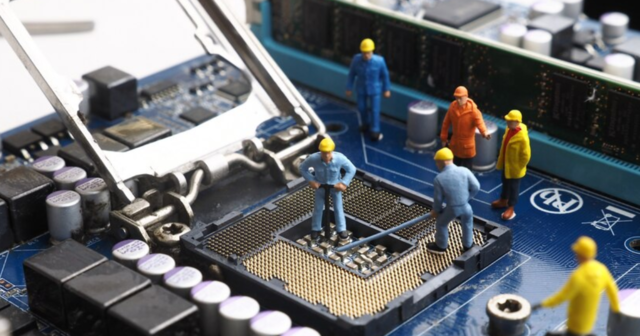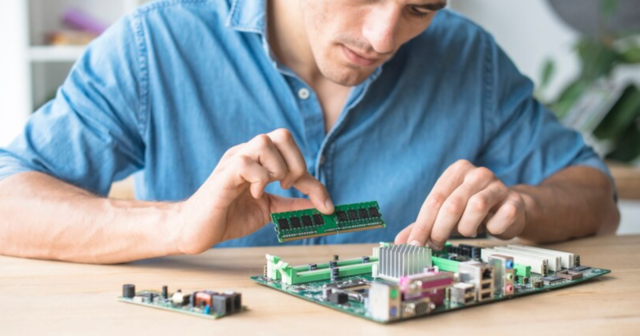Printed Circuit Board (PCB) assembly is the linchpin of modern electronics, transforming bare circuit boards into functional systems that power our world. By precisely mounting and soldering components, PCB assembly ensures that devices from smartphones to life-saving medical equipment perform reliably and efficiently. In an era where technology drives innovation, high-quality assembly services are non-negotiable, providing the foundation for durability, performance, and compliance with stringent industry standards.
This comprehensive guide delves into the pivotal role of PCB assembly in electronics manufacturing. We’ll explore its protective benefits, key techniques, challenges, and the value of expertise and speed in delivering superior results. Whether you’re a startup prototyping a new gadget or an enterprise scaling production, understanding PCB assembly is essential to success. Here’s what we’ll cover:
PCB assembly is more than just soldering components; it’s a critical process that enhances a circuit’s durability, signal integrity, and resilience. A well-assembled PCB protects against physical, environmental, and electrical stressors, ensuring long-term performance in demanding applications.
Electronics face constant threats from moisture, dust, and mechanical stress. PCB assembly incorporates protective measures to counter these risks:
A properly assembled PCB maintains consistent electrical performance, avoiding common pitfalls that compromise functionality:
High-quality PCB assembly adheres to rigorous standards, ensuring safety and reliability:
By prioritizing protection, PCB assembly lays the groundwork for electronics that perform reliably in diverse conditions.

PCB assembly employs a range of techniques, each suited to specific applications and performance needs. These methods balance miniaturization, strength, and environmental resilience.
SMT is the dominant assembly method in modern electronics, enabling compact, high-performance devices.
THT remains relevant for applications requiring mechanical strength.
Many PCBs combine SMT for compact, high-density components and THT for high-power or mechanically stressed parts. This hybrid approach optimizes both performance and reliability, catering to complex designs like automotive control units.
Post-assembly, conformal coating adds a protective polymer layer to shield the PCB from environmental hazards:
These techniques, when applied skillfully, ensure PCBs withstand the rigors of their operating environments.
Despite advancements in technology, PCB assembly presents challenges that can compromise quality if not addressed. Understanding these issues and implementing solutions is crucial for reliable outcomes.
To mitigate these challenges, manufacturers employ advanced tools and practices:
By proactively addressing these issues, assemblers deliver PCBs that meet stringent quality standards.
Not all PCB assembly services are created equal. Experienced providers bring a wealth of knowledge that translates into superior results, fewer defects, and optimized processes.
Seasoned assemblers excel in critical areas:
Modern PCBs, such as High-Density Interconnect (HDI), flex-rigid, or high-frequency boards, demand specialized skills. Experienced providers understand the nuances of micro-vias, fine-pitch components, and impedance control, ensuring flawless execution.
Veteran assemblers quickly identify and resolve issues, such as:
Experience reduces material waste and rework, lowering costs while maintaining quality. Skilled providers also streamline workflows, delivering faster turnarounds without cutting corners.
In today’s fast-paced markets, rapid PCB assembly is a game-changer, enabling businesses to innovate and respond to demand swiftly.
To deliver rapid results without sacrificing reliability, providers rely on:
By combining speed with precision, quick-turn services empower businesses to stay agile and competitive.

Selecting the right PCB assembly partner is critical to achieving high-quality results and meeting project deadlines. Consider these factors when evaluating providers:
Certifications like ISO 9001 (quality management), IPC Class 3 (high-reliability electronics), and UL (safety) demonstrate a commitment to excellence. Compliance with RoHS and REACH ensures environmentally responsible manufacturing.
A versatile partner can handle both low-volume prototypes and high-volume production, adapting to your project’s growth.
Look for providers offering:
A responsive partner collaborates closely, ensuring your project stays on track.
PCB assembly is the invisible force behind the electronics that shape our lives. From shielding circuits against environmental hazards to enabling cutting-edge miniaturization, it plays a pivotal role in delivering reliable, high-performance devices. By partnering with an experienced, quality-focused assembly provider, businesses can ensure compliance, accelerate innovation, and achieve faster market entry.
At Megabyte Circuit, we’re passionate about delivering precision PCB assembly services in Ahmedabad. Our offerings include:
Ready to elevate your electronics project? Contact us today for expert PCB assembly solutions tailored to your needs!
C/10, Yogeshwar Estate, B/H Madhuram Estate, Nr. Vishala Estate, Sardar Patel Ring Rd, Odhav, Ahmedabad, Gujarat, Ahmedabad - 382430, Gujarat (India)
Copyright © 2025. Megabytes Circuit Systems All rights reserved.
Powered by FrogMEE Tech
